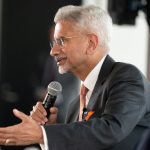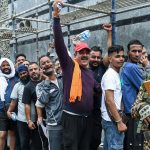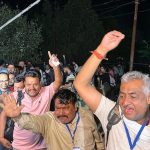HEALTHY LIFE MATTERS
Recently, Government Medical College Baramulla concluded a mega community outreach programme in one of the far-flung areas of the district. I too participated in this event as a member of the medico-team. An unexpected number of people from adjacent areas of Shripora village (Health and Wellness Centre) showed presence for free health services offered by the medico-field team. The main target of this outreach programme was to mobilize and involve a large number of participants, encourage them to get medical checkups, endow them with social space for chaos-free doctors-patient interaction, and educate them about non-communicable diseases and cardio-vascular diseases, with a primary focus on hypertension, diabetes, and sudden cardiac arrests. In order to attract more participants from this far-flung area, the local health staff of the concerned centre and PRI members made public announcements about free medical checkups and essential medicines. This strategy perfectly worked for the successful conclusion of this event. These brief lines narrate the manifest outcomes of this event.
Now let’s talk about the latent outcomes of this program, or more precisely, what I observed during this daylong session. I will try to produce the account of this act in a teleological way, keeping in mind the historical specification. Due to massive advancements in the fields of transport, communication, and technology, worldwide processes like globalization and McDonaldization start shaping new patterns of life, boldly announcing this shift towards the service sector and the adoption of junk or fast foods. The members of the global village, especially the working class, inculcated new food habits in their lives and with the passage of time, their pattern of conventional or local food culture massively deteriorated. This transformation among the members of a community is commonly associated with lifestyle changes or challenges. The service sector directly affected the physical activities of people, and so-called fast food chains increased the quantity of saturated, unsaturated, and trans fats in human bodies. The end product of this is a tremendous increase in non-communicable and cardio-vascular diseases.
During this programme, I observed that people in our society are eager to listen to experts and receive advice from them about healthy lifestyles. Their massive participation in community outreach programmes in harsh winters indicates the seriousness and the fear caused by NCDs and CVDs. The people’s willingness to participate in community-centered outreaches substantiates the subaltern claims that the socially excluded and marginal communities deserve more attention, education, awareness, and government services. Their participation epitomized the idea of trust between medico-practitioners and patients. This dualistic relationship is the only way to engage in and eliminate NCDs and CVDs. Social and preventive measures are important in order to tackle iceberg shaped NCD and CVD diseases. Therefore, the bottom line is we need to divert more resources towards community outreach programmes to track, screen, and involve all the stakeholders in the development of healthy lifestyles among the members of our society.
(The author is a Senior Research Scholar at the University of Kashmir and presently works as a vocational counselor/MSW in GMC Baramulla)








